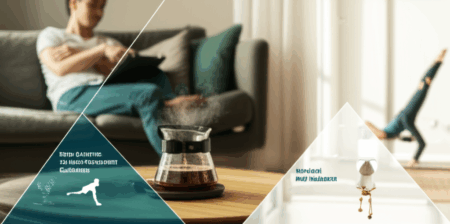For decades, the mantra has been clear: exercise is good for your mind. Yet, this seemingly straightforward truth, like a river flowing through diverse landscapes, reveals a richer, more complex reality upon closer inspection. While the profound positive impact of physical activity on mental well-being is undeniable, the true depth of its benefits, and indeed, its very efficacy, are profoundly shaped by the intricate tapestry of individual circumstances and environmental factors. It’s not just that you move, but how, where, and why you choose to do so that ultimately dictates the profound shifts in mental state.

The Foundational Science: Why Exercise Boosts Mental Well-being
The scientific consensus is robust: regular exercise significantly improves mental health and emotional well-being, reducing the incidence and symptoms of mental illnesses like depression and anxiety. This isn’t merely a feeling; it’s a cascade of biological and psychological mechanisms at play.
Neurochemical Transformations
One of the most well-known effects of physical activity is the release of “feel-good” chemicals in the brain. Endorphins, natural brain chemicals, act as pain relievers and mood enhancers, promoting an overall sense of well-being. Beyond endorphins, exercise influences other crucial neurotransmitters like serotonin and dopamine, both of which play vital roles in mood regulation and anxiety management. Regular exercise can help maintain balanced levels of these neurotransmitters, fostering a more positive outlook and potentially reducing the severity of depressive symptoms.
Structural and Functional Brain Changes
Exercise doesn’t just alter brain chemistry; it also promotes neuroplasticity, the brain’s ability to form new neural connections and adapt. Regular physical activity encourages the growth of new brain cells, particularly in the hippocampus, a region linked to memory and mood regulation. Furthermore, exercise can reduce inflammation in the brain and promote new activity patterns that foster feelings of calm.
Stress Reduction and Resilience
Physical activity directly impacts the body’s stress response. It can reduce the production of stress hormones like cortisol and help activate the parasympathetic nervous system, promoting relaxation and mitigating the “fight or flight” response commonly associated with stress and anxiety. This physiological modulation, along with providing an outlet for frustrations and reducing skeletal muscle tension, helps individuals manage stress more effectively and build resilience.
Psychological Benefits and Coping Mechanisms
Beyond the biological, exercise offers significant psychological advantages. Achieving exercise goals, even small ones, can boost self-confidence and self-esteem. It can also serve as a powerful distraction from negative thoughts, providing opportunities for new experiences and fostering a sense of control over one’s life. Moreover, regular physical activity can improve sleep quality, which is intrinsically linked to mood management.

Contextual Factors: The Variables That Matter
While the core benefits of exercise are clear, a growing body of research highlights that the “dose” of exercise alone doesn’t tell the whole story. The “how, where, and why” of physical activity significantly shape its mental health outcomes.
Exercise Modality and Type
Different types of exercise can yield varying benefits for mental health, and personal preference plays a crucial role in adherence and enjoyment.
Aerobic Exercise
Aerobic activities like jogging, swimming, cycling, walking, and dancing are widely proven to reduce anxiety and depression. Studies consistently show that regular aerobic exercise can effectively treat depression, even being as effective as antidepressant medication for mild to moderate cases. Aiming for at least 30 minutes of moderate-intensity aerobic exercise most days of the week is often recommended, though even shorter bouts of 10-15 minutes can improve mood.
Strength Training
Strength training, involving resistance to build muscle, is also highly effective in reducing symptoms of depression. It can boost self-esteem by improving body image and fostering a sense of accomplishment. For women, strength training has been shown to be particularly effective in reducing depression.
Mind-Body Practices (Yoga, Tai Chi, Qigong)
Practices like yoga, Tai Chi, and Qigong, which integrate physical movement with mental focus and controlled breathing, are increasingly recognized for their profound impact on mental well-being. They have been shown to reduce stress, improve overall well-being, and positively affect depression and anxiety by calming nerves and boosting overall mood through increased oxygen flow to the brain. Yoga, specifically, has shown significant benefits for depressive symptoms in various conditions, including PTSD and schizophrenia. Tai Chi’s slow, organized movements are beneficial to the nervous system, enhancing self-esteem and reducing stress.
Team Sports and Group Activities
Participating in team sports or group exercise offers unique mental health benefits beyond the physical exertion itself. The social interaction, support, and sense of belonging derived from these activities can significantly reduce feelings of loneliness and isolation, thereby improving mood and overall mental health. Studies suggest that team sports are correlated with the lowest mental health burden, possibly due to the favorable stress-reducing effects of social activity.
Intensity and Duration of Exercise
The “dose-response” relationship between exercise and mental health is not always linear and can be nuanced.
Optimal Duration
Research suggests that even short durations can be beneficial. Just 10-30 minutes of exercise can be sufficient to achieve gains in mood. Specifically, 30 minutes of moderate-intensity exercise, three days a week, is often sufficient for mental health benefits, and these minutes don’t need to be continuous (e.g., three 10-minute walks can be as useful as one 30-minute walk). However, there can be a point of diminishing returns or even negative effects for some individuals if exercise sessions are excessively long. For instance, exercising more than 90 minutes per session or more than 23 times per month has been associated with worse mental health outcomes in some studies. Very prolonged sessions (over 3 hours) may even be less effective.
Intensity Levels
The optimal intensity for mental health benefits can vary and has yielded contradictory results in research. Some studies suggest that moderate intensity aerobic exercise is sufficient, while others favor higher intensity for mood benefits. For anaerobic exercise, moderate intensity appears optimal for improving mood, possibly because lower intensity is “too dull” and higher intensity is “too unpleasant.” Higher intensity exercise, including high-intensity interval training (HIIT), has been linked to improvements in well-being and reductions in perceived stress and depression severity. However, some research indicates that high-intensity training can increase negative emotions like depression, anger, and fatigue in athletes. This highlights the importance of individual responses and personalized approaches.
Environmental Factors and Setting
Where and when exercise takes place can profoundly impact its mental health benefits.
Outdoor vs. Indoor Exercise
Exercising outdoors, particularly in “green spaces” or natural environments, often yields greater mental health benefits than indoor exercise. Exposure to nature can lead to greater reductions in stress, anxiety, and depression. This is attributed to factors like increased oxygen levels, exposure to natural light (which boosts serotonin and vitamin D), and the calming effect of natural surroundings, which can reduce cortisol levels more effectively. People who exercise outside also report higher levels of vitality, enthusiasm, pleasure, and self-esteem, and are more likely to exercise again.
Social Context
The social environment of exercise is a critical contextual factor. Exercising with others, whether in a group class, with a friend, or as part of a team, can enhance mental well-being significantly. The camaraderie, social support, and shared experience alleviate feelings of loneliness and provide motivation. Studies show that youth involved in team sports have better mental health outcomes compared to those who engage in physical activity individually.
Purpose and Enjoyment
The underlying motivation and enjoyment derived from physical activity are paramount. Leisure-time physical activity, done for enjoyment, consistently correlates with better mental health outcomes, showing stronger effects than obligatory or stressful physical tasks like housework or occupational physical activity. If exercise is viewed as a chore or leads to negative experiences (e.g., intense competition with blame), the mental health benefits can be diminished or even reversed.

Individual Differences: Tailoring the Approach
Recognizing that individuals respond differently to exercise is crucial for maximizing its mental health benefits.
Personality and Affective Responses
Individual differences, including personality traits, can influence how someone experiences exercise. For example, some individuals may experience a deterioration in mood during exercise, even at moderate intensities, while others consistently experience positive affective responses. These immediate emotional responses are hypothesized to influence future motivation and adherence to exercise programs. People with high extraversion may experience higher arousal during low-impact daily events, while highly neurotic individuals may feel less pleasant during common daily events. Tailoring activities to align with personal preferences can enhance motivation and adherence.
Existing Mental Health Conditions
Exercise is a highly effective adjunct or even primary treatment for various mental health conditions, particularly mild to moderate depression and anxiety. For individuals with severe mental health issues, exercise can still boost mood, concentration, and alertness, and improve cardiovascular health. Exercise has also shown benefits for people with conditions like schizophrenia, improving psychiatric symptoms and quality of life. However, for some conditions or severities, exercise should be combined with other treatments like therapy and medication, not as a replacement.
Personalized Exercise Plans
The recognition of contextual factors and individual differences underscores the importance of personalized exercise plans. A “one-size-fits-all” approach is insufficient; instead, programs should consider an individual’s health status, fitness levels, personal preferences, and psychological makeup.
Personalized plans can:
- Enhance Motivation and Adherence: When activities align with personal enjoyment and goals, individuals are more likely to stick to their routine.
- Target Specific Needs: For those managing stress, personalized plans can incorporate activities known to reduce tension, such as yoga for mindfulness or strength training for releasing physical tension.
- Improve Cognitive Function: Tailored exercise has been shown to improve cognitive functions like memory, attention, and processing speed, beneficial for busy professionals.
- Promote Holistic Well-being: Comprehensive plans can integrate physical activity with other health aspects like nutrition and stress management, offering a holistic approach to mental well-being.
- Foster Long-term Engagement: By adapting as an individual progresses, personalized programs remain challenging and relevant, fostering a lasting relationship with fitness.
The increasing understanding of these contextual factors is leading to a shift in how exercise is prescribed and viewed in mental health care. Health professionals and fitness experts are increasingly working together to create integrated, personalized approaches that leverage the full potential of physical activity for mental well-being.
Conclusion
The profound benefits of exercise for mental health are irrefutable, rooted in a complex interplay of neurochemical, physiological, and psychological mechanisms. However, the true efficacy and widespread adoption of exercise as a powerful tool for mental well-being lie in understanding its contextual dependence. By acknowledging and leveraging factors such as exercise modality, intensity, social setting, environmental influences, and individual differences, we can move beyond generic recommendations toward truly personalized and maximally effective physical activity interventions. This nuanced approach will empower individuals to harness exercise not merely as a physical exertion, but as a deeply personal and transformative practice for a healthier mind.







